 |
 |
 |
| |
Raltegravir (RAL) Pharmacokinetics in
Individuals with UGT1A1*1/*1 and UGT1A1*28/*28 Genotypes
|
| |
| |
Reported by Jules Levin
IDSA/ICAAC Wash DC Oct 2008
Amelia S. Petry1, Larissa A. Wenning1, James T. Kost1, Bo Jin1, Sheila A. Breidinger1, Inge De Lepeleire1, Edward J. Carlini1, Stephanie Young1, Frank Wagner2, Norman M. Lunde3, Frederick Bieberdorf4, Howard Greenberg5, Julie A. Stone1, John A. Wagner1, Marian Iwamoto1
1Merck & Co., Inc., Whitehouse Station, NJ, 2Charité Research Organisation GmbH (CRO), Berlin, Germany, 3Prism Research, St. Paul, MN, 4CEDRA Clinical Research LLC, Austin, TX, 5Thomas Jefferson University, Philadelphia, PA
Copyright 2008 Merck & Co., Inc., Whitehouse Station, New Jersey, USA, All Rights Reserved
AUTHOR CONCLUSIONS
RAL is generally well tolerated in individuals with UGT1A1 *28/*28 and UGT1A1 *1/*1 genotypes.
Plasma concentrations of RAL are modestly higher in individuals with the UGT1A1 *28/*28 genotype relative to the UGT1A1 *1/*1 genotype.
The difference in the pharmacokinetic profiles in the 2 groups is not considered to be clinically meaningful.
--- Overall clinical experience with RAL indicate that exposure increases on the order of 2-fold are not associated with increased risk of toxicity.
No dose adjustment of RAL is required for individuals with the UGT1A1*28/*28 genotype.
Background
Raltegravir (RAL) is a HIV-1 integrase strand transfer inhibitor
--- potent in vitro and in vivo activity against HIV-1
The primary metabolic pathway of RAL involves glucuronosyl transferase enzymes
--- primarily the UGT1A1 isoform
There exists a substantive prevalence of individuals with decreased UGT1A1 activity
-- Common phenotype exhibits presence of increased unconjugated bilirubin
This study investigated the pharmacokinetics (PK) of RAL in subjects with the UGT1A1*28/*28 genotype relative to those with the UGT1A1*1/*1 genotype
-- UGT1A1*28/*28: relatively common polymorphism with decreased UGT1A1 activity
Study Design
Open-label, single dose study
30 UGT1A1 *28/*28 subjects and 27 matched UGT1A1 *1/*1 subjects
-- Matched by race, age, gender, and body mass index [BMI]
Each subject received a single 400-mg dose of RAL in the fasted state
Blood samples were obtained predose and at selected time points up to
120 hours postdose
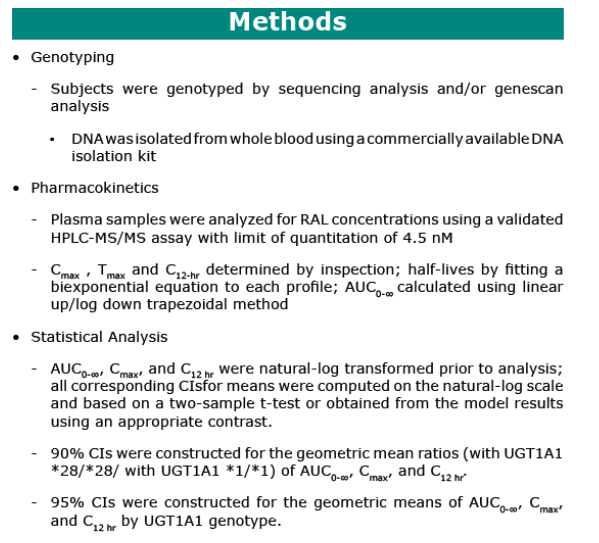
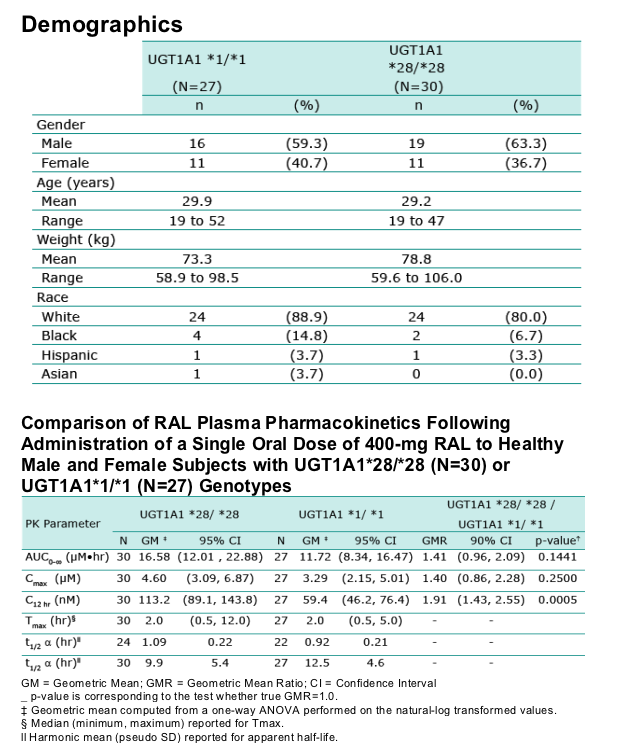
Subjects with the UGT1A1 *28/*28 polymorphism have, on average, modestly elevated plasma levels of RAL compared to subjects with wild-type UGT with an ~40% increase in AUC0-∞ and Cmax and 91% increase in C12 hr.
Median Tmax values for both genotypes was 2.0 hrs.
There was a substantial degree of overlap in the individual pharmacokinetic values for subjects in the two populations.
The relationship between bilirubin and the pharmacokinetics of RAL was explored with no clear trends evident between predose bilirubin levels and RAL PK parameter values.
Adverse Experience Summary
No serious clinical or laboratory adverse events were reported
There were no discontinuations due to adverse events
The most common drug-related clinical adverse event (reported by ≥2 subjects) was headache

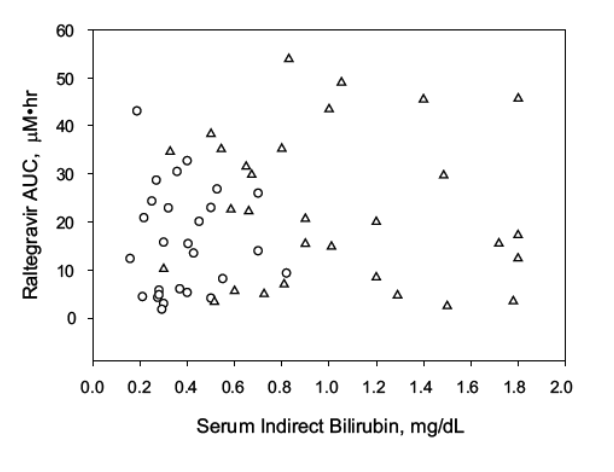
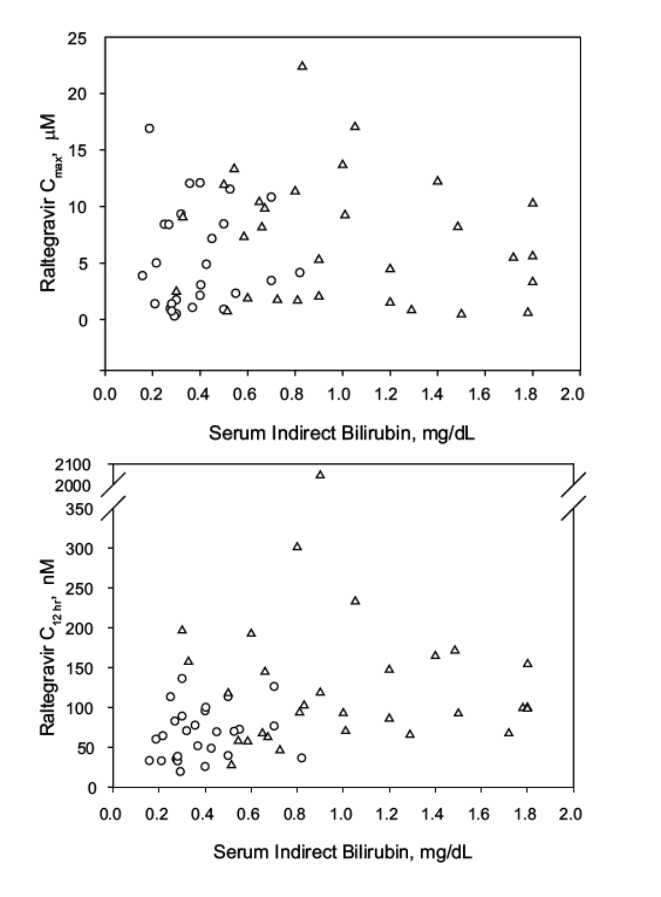
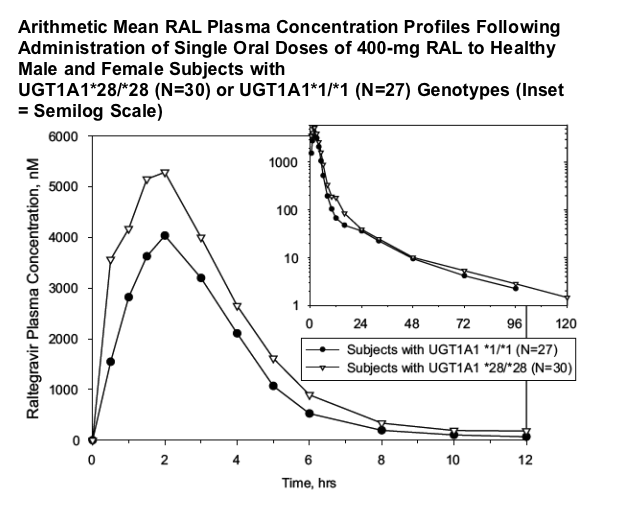
|
| |
|
 |
 |
|
|